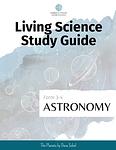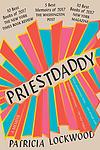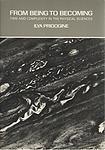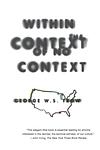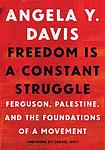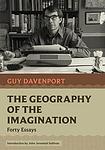The Greatest "Nonfiction" Books Since 1950
Click to learn how this list is calculated.
This list represents a comprehensive and trusted collection of the greatest books. Developed through a specialized algorithm, it brings together 300 'best of' book lists to form a definitive guide to the world's most acclaimed books. For those interested in how these books are chosen, additional details can be found on the rankings page.
Genres
Countries
Date Range
Reading Statistics
Click the button below to see how many of these books you've read!
Download
If you're interested in downloading this list as a CSV file for use in a spreadsheet application, you can easily do so by clicking the button below. Please note that to ensure a manageable file size and faster download, the CSV will include details for only the first 500 books.
Download-
1626. Things I Should Have Told My Daughter by Pearl Cleage
This book is a candid and introspective memoir that takes the form of a series of journal entries, offering a window into the personal life, thoughts, and experiences of a prominent African-American writer and activist. Through her reflections, she navigates the complexities of womanhood, motherhood, and professional life during the transformative decades of the 1970s and 1980s. The author's musings reveal her struggles with societal expectations, her involvement in the civil rights movement, and her journey towards self-discovery and empowerment, all while raising a daughter and grappling with the challenges of balancing her personal aspirations with her responsibilities as a parent.
-
1627. The Planets by Dava Sobel
"The Planets" is a captivating exploration of the celestial bodies within our solar system, characterized by a blend of science, history, and personal reflection. The book delves into the unique physical features and mythological stories of each planet, from the scorching surface of Mercury to the icy rings of Saturn. The narrative is enriched with poetic language and anecdotes that link the planets to their cultural and symbolic significances in human history, making complex astronomical concepts accessible and engaging to readers. Through this approach, the book not only informs about the planets but also reflects on their impact on human thought and imagination.
-
1628. The Light of the World by Elizabeth Alexander
"The Light of the World" is a deeply moving memoir about the author's life with her husband, an Eritrean-born chef and painter, their love story, and the grief and healing she experiences after his sudden death. The book is a reflection on their family life, their shared passion for art, and the author's journey through the pain of loss. It's a poetic tribute to a life well-lived and the enduring power of love.
-
1629. Blue Like Jazz by Donald Miller
"Blue Like Jazz" is a collection of personal essays that explores the nature of Christian faith, spirituality, and the struggle of living a Christian life in the modern world. The author shares his journey of faith, from growing up in a conservative religious community, to his questioning and doubts, and finally his reconnection with his faith in a more meaningful and personal way. The book offers a fresh and unconventional perspective on Christianity, challenging traditional religious norms and encouraging readers to seek a more authentic and personal relationship with God.
-
1630. The Evolution Of Beauty: How Darwin’s Forgotten Theory Of Mate Choice Shapes The Animal World — And Us by Richard O. Prum
In "The Evolution of Beauty," Richard O. Prum explores the theory of mate choice in evolution, arguing that it plays a much larger role in shaping animal traits and behaviors than previously thought. He examines the evolution of beauty in various species, from birds to humans, and how it relates to sexual selection and the idea of fitness. Prum also challenges traditional scientific beliefs about the role of natural selection in evolution and proposes a new perspective on the importance of aesthetic preferences in shaping the animal world and potentially even human culture.
-
1631. Priestdaddy by Patricia Lockwood
" Priestdaddy" is a memoir by Patricia Lockwood that recounts her experiences growing up in a highly unusual family. Her father is a Catholic priest who converted from Lutheranism and her mother is a former nun. The book explores the complexities of family dynamics, religion, and sexuality through Lockwood's sharp wit and unique perspective. The author also delves into her own struggles with mental illness and the challenges of reconciling her unconventional upbringing with her adult life. Overall, "Priestdaddy" is a poignant and humorous memoir that offers a fresh take on the coming-of-age genre.
-
1632. Grant by Ron Chernow
"Grant" is a comprehensive biography of the 18th President of the United States, Ulysses S. Grant. Written by Pulitzer Prize-winning author Ron Chernow, the book explores Grant's early life, military career, presidency, and post-presidential years. Chernow portrays Grant as a complex and often misunderstood figure, highlighting his military genius and leadership during the Civil War, as well as his struggles with alcoholism and financial ruin later in life. The book also delves into Grant's relationships with his wife, Julia, and political figures such as Abraham Lincoln and William Tecumseh Sherman. Overall, "Grant" offers a detailed and nuanced portrait of one of America's most significant historical figures.
-
1633. The Medical Detectives by Berton Roueché
"The Medical Detectives" is a collection of intriguing medical mystery stories that delve into the complex world of epidemiology and disease investigation. Each narrative unfolds like a detective story, where doctors and scientists act as sleuths to uncover the sources and causes of mysterious ailments. Through detailed case studies, the book highlights the painstaking process of medical diagnosis and the critical role of epidemiological work in understanding and preventing diseases. The stories not only shed light on the challenges faced by medical professionals but also celebrate their perseverance and ingenuity in solving perplexing medical puzzles.
-
1634. Laughing In The Hills by Bill Barich
"Laughing in the Hills" is a reflective and deeply personal narrative that intertwines the author's experiences at the racetracks with his philosophical musings on life and loss. After a significant personal upheaval, the author finds solace and a sense of purpose in the world of horse racing, exploring the tracks, the bettors, and the myriad characters who populate this vibrant subculture. Through his immersion in the races, he delves into themes of fate, addiction, and the elusive nature of luck, all while painting a vivid portrait of the track as both an escape and a mirror to life's challenges and unpredictabilities.
-
1635. The Panda's Thumb by Stephen Jay Gould
"The Panda's Thumb" is a collection of essays that delve into the peculiarities and wonders of natural history, emphasizing the concept of evolution through natural selection. The book explores a range of topics, from the title essay which discusses the evolutionary function of the giant panda's unique thumb as a specialized adaptation, to broader themes involving the imperfections that characterize evolutionary processes. The author uses these discussions to argue against the notion of a perfectly created world, instead presenting a perspective of life as a series of historical contingencies that produce the diverse and sometimes bizarre organisms observed in nature.
-
1636. From Being To Becoming by Ilya Prigogine
The book explores the concept of time and its role in the physical sciences, presenting a new understanding of the universe as a dynamic, evolving entity. The author challenges traditional physics' emphasis on determinism and reversibility, arguing instead for a view of the world where irreversibility and the flow of time are fundamental to the laws of nature. Through a discussion of thermodynamics, statistical mechanics, and nonlinear dynamics, the book illustrates how the inclusion of time transforms our understanding of complex systems and leads to a new scientific framework that harmonizes the theories of classical and quantum mechanics.
-
1637. Within The Context Of No Context by George W. S. Trow
"Within the Context of No Context" is a critical examination of the impact of television and mass media on American culture and individual identity. The book presents a poignant analysis of how media reshapes human experiences and societal norms, creating a "context of no context" where traditional frameworks for understanding the world are eroded. The author argues that the overwhelming presence of media leads to a superficiality that disconnects people from authentic human interactions and historical continuity, ultimately altering perceptions of reality and diminishing the depth of personal and collective narratives.
-
1638. London Orbital: A Year Walking Around the M25 by Iain Sinclair
This book is a travelogue that documents the author's year-long journey walking around the M25, the motorway that encircles London. Throughout his journey, the author explores the history, geography, and culture of the areas surrounding the motorway, offering a unique and fascinating perspective on the city and its outskirts. The book is a blend of personal experience, social commentary, and historical investigation, providing a detailed and insightful look at London from a different angle.
-
1639. Scar Tissue by Anthony Kiedis
"Scar Tissue" is an autobiography that delves into the tumultuous life and career of a rock band's lead singer, chronicling his journey from a rebellious childhood in Hollywood to international fame. The book candidly explores his struggles with addiction, relationships, and the challenges of the music industry, while also recounting the formation and success of his band. It offers an intimate look at the author's personal demons, his quest for creativity, and the redemptive power of music, all set against the backdrop of the evolving rock scene.
-
1640. Ultrasociety by Peter Turchin
This book explores the fascinating journey of human societies from small, egalitarian groups to the vast, complex societies we see today, focusing on how humans have achieved remarkable levels of cooperation on a large scale. The author employs the principles of cultural evolution, particularly the theory of "cultural multilevel selection," to explain the mechanisms behind the rise of states, empires, and modern corporations. Through a blend of historical evidence and scientific research, the book argues that warfare and the competition between societies have been crucial drivers in forcing societies to become more cooperative and less unequal, ultimately leading to the formation of ultra-cooperative communities, or "Ultrasociety," capable of remarkable feats but also facing new challenges in the modern era.
-
1641. Freedom Is A Constant Struggle by Angela Davis
This book is a collection of essays, speeches, and interviews that delve into the interconnectedness of struggles against state violence and oppression throughout history and around the world. The author, a prominent activist and scholar, draws parallels between various movements for social justice, including the civil rights movement in the United States, the fight against apartheid in South Africa, and the Palestinian liberation struggle. She emphasizes the importance of collective action and the need for solidarity across different causes, arguing that the fight for freedom is an ongoing and universal endeavor that requires persistence and an understanding of the historical and global contexts of resistance.
-
1642. Dignaga's Investigation Of The Percept by Douglas Duckworth
"Dignaga's Investigation of the Percept" is a scholarly analysis that delves into the seminal work of Dignaga, an influential Indian Buddhist philosopher and logician. The book provides a detailed examination of Dignaga's theories on perception and epistemology, exploring his arguments that perception is a non-conceptual, direct form of cognition, distinct from inferential cognitive processes. Through a comprehensive study, the text not only elucidates Dignaga's philosophical contributions but also discusses their implications and the subsequent debates they sparked in classical Indian philosophy, offering insights into the broader discourse on the nature of knowledge and reality in Buddhist thought.
-
1643. What Art Is by Arthur C. Danto
This book explores the philosophy and definition of art, challenging traditional views and proposing a new framework for understanding what art truly is. The author argues that art is not defined by its aesthetic qualities or by the intentions of the artist, but rather by the context and the role of theories and interpretations in shaping our perception of what art is. Through a series of engaging discussions and analyses of historical and contemporary artworks, the book invites readers to reconsider their assumptions about art and its value, suggesting that art's essence lies in its ability to embody meanings and ideas that transcend its physical form.
-
1644. The Unwinding: An Inner History of the New America by George Packer
The book offers an in-depth look at the social, political, and economic transformations that have occurred in America over the past three decades. It presents a series of personal narratives from various individuals, including a factory worker, a Silicon Valley billionaire, and a Washington insider, among others. These stories serve to illustrate the larger trends and changes that have taken place in the country, such as deindustrialization, the rise of technology, and the influence of money in politics, and how these shifts have affected the American dream.
-
1645. Paying For The Party by Laura Hamilton, Elizabeth A. Armstrong
This book provides an in-depth examination of how the social and academic life at a large public university in the United States impacts young women from different socioeconomic backgrounds. Through a longitudinal study, the authors explore how the university's "party pathway" facilitates the success of affluent students while marginalizing those from less privileged backgrounds. The book highlights the role of social class in shaping educational outcomes and experiences, revealing the hidden curriculum of higher education that prioritizes social over academic engagement. It offers a critical look at the college experience, questioning the broader implications for social mobility and equality in an ostensibly meritocratic system.
-
1646. The Geography Of The Imagination by Guy Davenport
"The Geography of the Imagination" is a collection of forty essays that delve into the interplay between literature, art, and the cultural history that binds them. The essays explore a wide range of topics, from the influence of ancient Greek culture on modern society to the nuanced readings of works by authors such as James Joyce, Ezra Pound, and Wallace Stevens. The author employs a rich, allusive style to argue that the imagination is a landscape shaped by the geography of an artist's cultural and intellectual experiences, offering insightful connections that illuminate the complexities of the creative mind and its creations.
-
1647. A Romantic Education by Patricia Hampl
"A Romantic Education" is a memoir that explores the author's Czech heritage, blending personal history with the broader cultural and political landscape of Eastern Europe. The narrative delves into the author's journey to Czechoslovakia, where she seeks to reconnect with her roots and understand her identity against the backdrop of the Cold War. Through her travels and the stories of her family, the book examines themes of memory, heritage, and the romantic idealizations that people often hold about their origins and how these contrast with the complex realities of history and national identity.
-
1648. Totto Chan, The Little Girl At The Window by Tetsuko Kuroyanagi
The book is a charming autobiographical memoir of a young girl's experiences at an unconventional school in Tokyo during World War II. The narrative focuses on the unique educational approach of the school's headmaster, who values freedom, creativity, and individuality in the educational process. Through a series of heartwarming episodes, the book illustrates how the school becomes a delightful haven for the girl, fostering her curiosity and love of learning amidst the backdrop of a society facing the challenges of war. The story is a testament to the impact of progressive education on young minds.
-
1649. Critical Path by R. Buckminster Fuller
"Critical Path" is a forward-thinking book that explores the potential paths humanity can take to ensure survival and sustainable development. The author presents a comprehensive overview of the world's technological, economic, and political trends and stresses the importance of adopting a global perspective. He argues that efficient use of the world's resources, innovative design solutions, and a commitment to addressing poverty and enhancing living standards for all people are crucial. The book serves as a call to action, urging humanity to rethink traditional practices and to embrace a cooperative and technologically integrated future.
-
1650. List Of Books by Frederic Raphael
"List of Books" is a curated compilation that offers readers a diverse selection of significant works across various genres and periods. The book serves as a guide, providing insights and summaries that help to contextualize each recommended work's importance in literature, history, and broader cultural movements. This compilation is designed to enrich the reader's understanding and appreciation of influential texts, making it an invaluable resource for both avid readers and those seeking to broaden their literary horizons.
Reading Statistics
Click the button below to see how many of these books you've read!
Download
If you're interested in downloading this list as a CSV file for use in a spreadsheet application, you can easily do so by clicking the button below. Please note that to ensure a manageable file size and faster download, the CSV will include details for only the first 500 books.
Download
